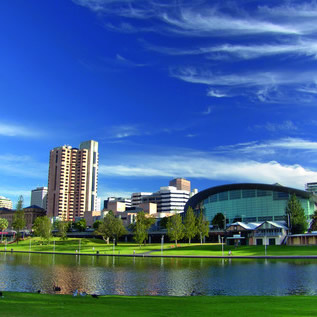City’s investment prospects ‘gloomy’
Despite offering investors some solid fundamentals, property prices in one capital city are expected to face significant downward pressure in 2016 and beyond.

Speaking about Adelaide, Propertyology’s Simon Pressley said the city is likely to deliver steady property price growth in 2015 on the back of appealing affordability and record low interest rates.
To continue reading the rest of this article, please log in.
Create free account to get unlimited news articles and more!
The outlook from there, however, is less positive, Mr Pressley said.
“Unfortunately, the Adelaide market beyond 2016 looks somewhat gloomy. The pending challenges with Adelaide’s manufacturing sector are significant – government intervention is required. Propertyology’s current expectations are that employment opportunities are likely to significantly diminish and pressure on property values will go with it,” he said.
Mr Pressley also noted that “a distinct lack of economic drive continues to underwhelm” and said a “big question mark” hangs over important industries in the city.
“The future for Adelaide’s property market rests in the fate of its economy. South Australia’s key industries are manufacturing, agriculture, mining and tourism," he said.
“It also has a significant representation of defence force personnel.”
“Significant concerns beckon for manufacturing in the state. According to a report produced by the University of Adelaide, 24,000 jobs will be lost in South Australia as a result of closures to car manufacturing plants by Ford (2016), Holden and Toyota (both 2017). A cloud also hangs over the careers of thousands of employees at the Defence Materiel Organisation (DMO) and Australian Submarine Corporation (ASC), which play a major role in the manufacturing for, and maintenance of, Australia’s defence forces.”
Despite some potentially promising projects and economic boosts that are on the horizon for Adelaide, Mr Pressley said more would need to be done to lift the city’s mid-term investment prospects.
“A federal government white paper on Australia’s defence force published in 2011 flagged unprecedented levels of investment in military fleet expansion plus an increase in personnel – Adelaide was to be the primary beneficiary. Subsequent federal budget pressures and Australia’s obvious inability to compete on price with international manufacturers of equipment such as submarines means that neither of these bold targets would come close to being realised,” he said.
“A significant economic boost is needed to increase demand for goods and services in South Australia. While there is an abundance of opportunities to leverage its agriculture and tourism industries off the Asian Century, there is nothing tangible at present to suggest that prosperity is just around the corner.”
A few key infrastructure projects – the $2.1 billion Royal Adelaide Hospital, the $1.5 billion Adelaide Riverbank urban renewal project and the $1 billion expansion of Adelaide airport – are likely to help stimulate the economy, but may not be enough to offset the city’s economic and employment woes, Mr Pressley said.
“Aside from these major infrastructure projects, the only thing currently on the horizon to stimulate Adelaide’s economy is the possible expansion of the Olympic Dam mine. Only time will tell whether BHP, the world’s biggest mining company, will finally bite the bullet after 30 years of planning and give the green light to the Olympic Dam mining expansion to create the world’s biggest mine. If this ever did occur, there is potential for more than 10,000 new jobs to be based in Adelaide, directly working for BHP and indirectly providing support services.
“The long-term subdued nature of Adelaide’s economy is directly reflected in South Australia’s modest population growth figures – an average of 1.0 per cent per annum over the past decade compared to a 1.7 per cent national average.”
Mr Pressley added that the city’s job market also had its problems.
“South Australia’s unemployment figures have consistently been trending above the national average for some time. The job creation data for Greater Adelaide contrasts the impressive 246,121 jobs created in 2011 to a net job loss of 71,813 in 2014. The north and west of Adelaide have the highest unemployment rates,” he said.
Some suburbs are likely to be hit particularly hard by impending job losses, he said.
“Nine thousand of the job losses from the car manufacturing sector will be to the residents of the northern Adelaide LGAs of Salisbury, Playford, Tee Tree Gully, and Port Adelaide Enfield. Residents of the Onkaparinga LGA in the south of Adelaide are also expected to lose 3,000 jobs from the demise of the car manufacturing industry. The DMO and ASC defence force factories are located in the suburb of Osborne,” Mr Pressley said.
Adelaide’s “uninspiring economy” has meant there has been limited housing demand, with supply remaining in check.
He noted that the suburbs of Paradise, Gawler South, Craigmore, Daroven, Angle Vale, Enfield, Northgate, Windsor Gardens, Parafield Gardens, Salisbury North, Aldinga and Seaford were seeing the highest volume of new housing stock come onto the market.
